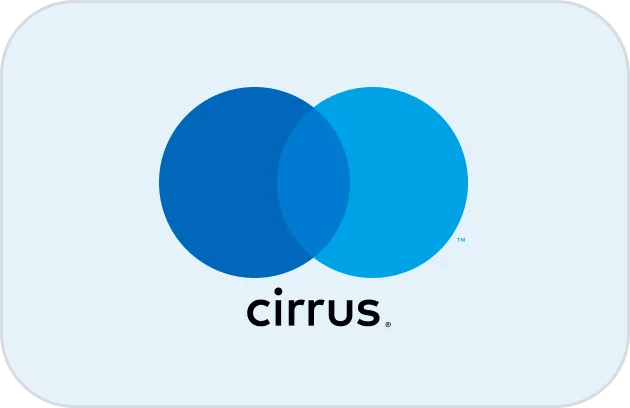If your outbound engine still treats “compliance” as a checkbox after the sequence is live, you’re running on borrowed time. 2025 dialing means first-party data discipline, consent you can prove, revocation that actually works, and dialer logic that never places a prohibited call in the first place. This field guide translates TCPA-safe operating habits into architecture, routing, and coaching patterns—so your team hits quota without inviting lawsuits.
Plain-English note: This is practical guidance, not legal advice. For interpretations of federal/state law and exemptions that apply to your business, consult counsel.
| Control Area | What “Good” Looks Like | Why It Matters |
|---|---|---|
| Consent source registry | Immutable store logging form URL, timestamp, IP, checkbox text, version | Proves prior express consent beyond “we think they opted in” |
| Consent types | Separate tags for marketing, informational, and dual-purpose consents | Dialer routes vary by consent scope |
| Revocation capture | Global STOP/unsubscribe, voice revocation script, and CRM quick-drop | Revocation must be easy and honored fast |
| DNC layering | National DNC, internal DNC, brand-level suppression, litigant lists | You block what should never be dialed—ever |
| Wireless detection | Carrier lookups + ported-to-wireless detection pre-dial | Robocall rules differ on cell vs landline |
| Dialing mode guardrails | Preview/manual for uncertain consent; pacing caps by queue | Aggressive pacing without consent is a lawsuit factory |
| Local time gating | Per-number timezone with holiday calendar | Prevents after-hours violations |
| Scrub frequency | Real-time on import and again at dial time | Stale scrubs create new exposure |
| Identity presentation | STIR/SHAKEN attestation, branded caller ID where supported | Legit identity reduces labeled spam flags |
| Abandon policy | Pacing tuned to keep abandons under strict internal threshold | High abandons are a red flag and CX killer |
| Voicemail behavior | No prerecorded marketing drops without proper consent | Prevents “ringless” gotchas |
| Record retention | Consent, revocations, disclosures, recordings: unified retention policy | You can reproduce proof on demand |
| Revocation SLA | System-wide enforcement in minutes, not days | “We’ll update next week” is not a defense |
| Script disclosures | Agent script includes brand, purpose, opt-out phrase | Customer rights are clear and repeatable |
| Third-party leads | Vendor-by-vendor proofs, consent language parity, audit rights | “Lead said OK” isn’t proof—copy is |
| Litigation hold | Auto-freeze records and numbers when a dispute is flagged | Preserves evidence trail |
| Dialer config audit | Versioned snapshots of pacing, modes, queues, scripts | You can prove what was live on a date |
| Training cadence | Quarterly refreshers + scenario testing for agents | Keeps behaviors consistent at scale |
| Suppression sync | API-level sync among CRM, dialer, SMS, email | One opt-out obeyed everywhere |
| ANI pool hygiene | Call volume balancing, spam label monitoring, replacement plan | Extends number reputation health |
| Callback windows | Consent-aligned windows with local time logic | Callbacks don’t become violations |
| AI assist policy | Guidelines for summaries, no autonomous opt-in changes | Automation helps without crossing lines |
| QA coverage | 100% machine pre-screen + human calibration weekly | Catches drift fast |
| Exception routing | If consent is unclear, route to manual preview team | Prevents risky automated dials |
| Geofencing | Respect state-specific rules via per-number locale | Local compliance ≠ national averages |
| Change control | Feature flags, canaries, and rollback for dialer changes | No sudden compliance regressions |
| Burden of proof pack | One-click export: consent PDFs, audio, logs, policies | Respond to claims with facts, fast |
| “One brain” stack | Dialer uses same profile, consent, and DNC as your call center platform | No drift between systems |
1) What Triggers TCPA Trouble (and How Modern Dialers Avoid It)
TCPA risk concentrates in four places: dialing systems that behave like autodialers without proper consent, prerecorded/AI voices used for marketing, calling mobile numbers at the wrong hours, and ignoring revocation or DNC signals. You mitigate these by selecting the right mode for each record, proving consent lineage, and letting the system—not reps—enforce the rules. That’s why a U.S.-focused engine like TCPA-ready auto dialers place compliance logic in front of speed, then use pacing and prediction to give speed back safely.
“But preview is slow.” Not when you reserve predictive for records with crystal-clear marketing consent and solid reputation scores, and keep preview/manual for informational or ambiguous cohorts. The win is grown-up segmentation, not one mode everywhere.
2) Consent, Modes, and Scripts (The Matrix Your Reps Actually Use)
Consent text governs the mode. Prior express written consent (PEWC) that explicitly authorizes marketing calls/texts to a mobile number unlocks automated dialing and prerecorded content; informational consent narrows the path to non-marketing communications; no consent moves you to manual dialing and non-automated workflows or to no call at all depending on DNC posture.
Operationalize this with tagged segments and queue-level rules. Map scripts to the consent: identity up front, purpose stated clearly, opt-out offered in simple language. Use agent assist to surface exactly the disclosure required for that contact. For playbook depth and pacing designs that keep abandon rates humane, borrow proven moves from predictive dialing strategies and the transition patterns in AI-powered sales acceleration.
3) List Hygiene and Revocation (Your Two Fastest Risk Reductions)
Big wins happen before the first ring. First, suppress everything you shouldn’t dial: national/internal DNC, explicit revocations, litigant/repeat-complainer lists, and numbers flagged by reputation tools. Re-scrub ported-to-wireless and reassigned numbers. Second, make revocation effortless. “STOP” works in any channel; agents can drop a one-click DNC marker mid-call; and confirmation back to the contact proves the update stuck.
The enforcement path is automated. A rep who “forgets” to honor a request is a system failure, not a coaching opportunity. Wire revocations into the same event spine and routing your predictive routing uses, so the number instantly becomes non-dialable everywhere—voice, SMS, and even re-engagement emails via suppression sync.
4) Architecture That Makes Illegal Calls Impossible (By Design)
Your compliance posture shouldn’t depend on every rep doing everything right forever. It should be a property of your system. Start with a “single conversation brain” architecture: consent, revocation, DNC, and identity live in one profile that every channel reads. The dialer enforces the rules before a call is placed, not after a warning pops up. For always-on behavior and survivability, replicate the reliability patterns from zero-downtime call systems and pair with the regional-edge approach in downtime-proof call centers.
Then make change safe. All dialer configuration—pacing, modes, scripts, disclosures—ships behind feature flags with canaries and rollback. Snapshots are versioned so you can prove what was live on a given date. Finally, your analytics warehouse ingests events from lead creation through revocation and resolution so you can build a burden-of-proof pack instantly.
5) Agent Behaviors Customers Feel (and Regulators Notice)
Agents don’t read laws—they follow what’s on screen and what’s coached. Give them a short disclosure they can say confidently: brand, purpose, and a clean opt-out line. Provide guided steps so they don’t improvise consent logic. Detect phrases like “don’t call me” with live transcription and prompt the rep to confirm and honor revocation on the spot. That human-in-the-loop design pairs beautifully with AI-first QA and reduces re-training fatigue.
On pacing, fewer abandoned connects beats more dials. Calibrate the predictive engine to the slowest confident pickup curve for that queue and run “polite retry” rules that avoid pounding the same number. Borrow the battle-tested, U.S.-specific playbook from U.S. sales dialers and tune for your segments rather than copying a global default.
6) Measurement Without Drama (So You Catch Drift Before It Hurts)
You can only manage what you can reproduce. Track consent lineage present/absent per record, revocation-to-enforcement time, DNC catch rate at dial-time, after-hours block rate, abandon rate by mode, spam label incidents by ANI, and disclosure adherence. Push every connect through 100% machine QA for script and disclosure, and calibrate humans weekly on a rotating sample. When something slips—new vendor with weak proof language, a queue where abandons crept up—you fix the process, not the person.
Executives care about risk avoided and pipeline created, not dashboards. Align your scorecard to “complaints per 10k dials,” “proof pack SLA,” “meetings per 100 connects,” and “revenue/contact.” Use the prioritization mindset that ranks capabilities by measurable impact, as outlined in ROI-ranked features.
7) Your First 120 Days: A Plan You Can Actually Run
Days 1–14 — Foundations. Centralize consent and DNC. Ingest legacy proofs; tag records by consent scope. Wire STOP logic across voice/SMS/email via one suppression service. Gate dialing by local time. Turn on branded caller ID where carriers support it. Spin up canary queues per segment. Anchor reliability with the patterns you’d use for U.S.-scale, compliant platforms.
Days 15–45 — Modes and Scripts. Map modes to consent tags; preview/manual for uncertain, predictive for PEWC-clean segments. Ship the short disclosure and a revocation micro-flow in the UI. Automate litigant/internal DNC blocks. Add pacing caps to keep abandons well below your internal threshold. Instrument “proof pack” exports.
Days 46–90 — QA + Coaching. Light up 100% AI pre-screening; hold weekly calibrations. Add live prompts for disclosures and opt-out handling with real-time coaching. Start nightly DNC/STOP diff emails to ops and legal. Bring tooling comparisons to retire “shadow” outreach tools that ignore suppression.
Days 91–120 — Scale and Prove. Roll PEWC-clean segments into predictive with stricter pacing; keep ambiguous segments in preview. Publish a quarterly risk/revenue pack: complaints per 10k dials, abandon rate, meetings/booked, revenue/contact. Present two proposals: expand PEWC capture flow with clearer language; or reinvest into routing and callbacks from contact centre playbooks to lift conversion without adding risk.
After 120 days, compliance should feel baked in: illegal dials are “can’t happen,” not “hope not.” And reps feel faster because the system protects them while removing busywork.
FAQs — Short Answers That Keep You Out of Trouble
Do we need different consent for marketing vs. informational calls?
Yes. Treat marketing and informational as separate scopes. PEWC unlocks marketing to mobile with automation; informational consent supports service updates or transactional outreach. Tag each record with the exact language received, and route modes and scripts accordingly.
What if a lead came from a partner or marketplace?
Import the partner’s consent proof—landing page text, timestamp, IP, and checkbox evidence—or treat as non-marketing until you obtain consent directly. Vendor contracts should require specific language parity and audit rights. Don’t dial first and ask for documents later.
How fast must we honor revocation?
Operationally, within minutes. Route STOP and “do not call me” indicators to a central suppression service and enforce across dialer, SMS, and email automatically. Send a confirmation message when appropriate; log the event to your proof pack.
Does predictive dialing automatically mean non-compliant?
No. Risk depends on consent scope and how the system places calls. Use predictive only on segments with documented PEWC, keep abandon rates low with conservative pacing, and switch ambiguous segments to preview/manual. Segment first; speed second.
How do we defend against “you never had my consent” claims?
Maintain a consent registry per contact with the exact language, URL, timestamp, and IP, plus any partner proofs. Keep dialer configuration snapshots and call/recording logs. Export these as a single, dated pack. Facts resolve disputes faster than arguments.
Our numbers keep getting flagged as spam—what fixes it?
Balance call volume across ANI pools, use branded caller ID, avoid high short-call ratios, and stop hammering the same number with aggressive retries. Monitor labels and replace tainted ANIs. Quality routing from modern telephony stacks helps sustain reputation.
Can AI handle disclosures and revocation automatically?
AI can prompt and summarize, not unilaterally decide consent. Use real-time guidance to keep disclosures crisp and a single click to log revocation. Validate with 100% machine QA and weekly human calibration, as in the AI-first QA approach.








